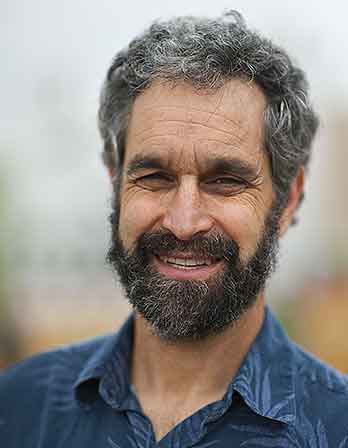Nanoporous Black Silicon by Liquid Etch: Optics,Photovoltaics and Photoelectrochemistry
(基于液相刻蚀技术的纳米孔黑硅:光学、光伏和光电化学特性)
9月15日(星期一)上午10:20-12:00,雁栖湖 教1-227
 报告人:Dr. Howard Branz,国际光伏领域知名专家。美国物理学会(APS)会士。美国能源高级研究计划局项目负责人(Advanced Research Projects Agency Energy, ARPAE)。曾任美国国家可再生能源实验室 (National Renewable Energy Laboratory, NREL) 光伏中心硅组负责人。
报告人:Dr. Howard Branz,国际光伏领域知名专家。美国物理学会(APS)会士。美国能源高级研究计划局项目负责人(Advanced Research Projects Agency Energy, ARPAE)。曾任美国国家可再生能源实验室 (National Renewable Energy Laboratory, NREL) 光伏中心硅组负责人。
Dr. Branz is recognized for his creative approaches to putting quality crystal Si films on inexpensive substrates, for the development of new methods of cheaply fabrication nano-structured anti-reflective "black" silicon, and for his studies of transport, defects and hydrogen diffusion in amorphous semiconductors.
In 1998, Branz proposed and published the widely-cited hydrogen collision model of metastable degradation. He has also worked in fields as diverse as photoelectrochemical hydrogen production, electrochromics, memory switching devices, neutron detectors and field-induced DNA motion. Branz has published more than 110 papers in refereed scientific journals and has about 20 U.S. patents issued or pending.
In 2011, a team led by Branz developed a confirmed 18.2% efficient black silicon solar cell—the best intentionally-nanostructured solar cell ever made. This technology is now being commercialized by Natcore Technology. Dr. Branz also led a cooperative research initiative that launched a venture-capital-funded start-up, Ampulse Corp., using an NREL-developed chemical vapor deposition process to grow the silicon on Oak Ridge National Laboratory's inexpensive textured rolled-metal foil.
Dr. Branz began his scientific career as an Associate Engineer at in the MIT Lincoln Laboratory Photovoltaic Systems Engineering group. After completing his Ph.D. thesis at MIT under the direction of Profs. David Adler and John Haggerty on hydrogenated amorphous silicon (a-Si:H) growth, transport physics, and solar cells, Dr. Branz joined NREL in 1987. From 1996 to 2001, Branz led the NREL Amorphous Silicon Photovoltaics Team. From 2003 to 2007, Branz was Manager of the NCPV Silicon Materials and Devices Group. From April 2012, Branz will be on assignment as a Program Director at the DOE Advanced Research Projects Agency (ARPA-E), while continuing to participate in NREL research.
Film crystal silicon photovoltaics
Defects, metastability, and diffusion in semiconductors
Amorphous semiconductors
Solar hydrogen production
Nanostructured black silicon antireflection